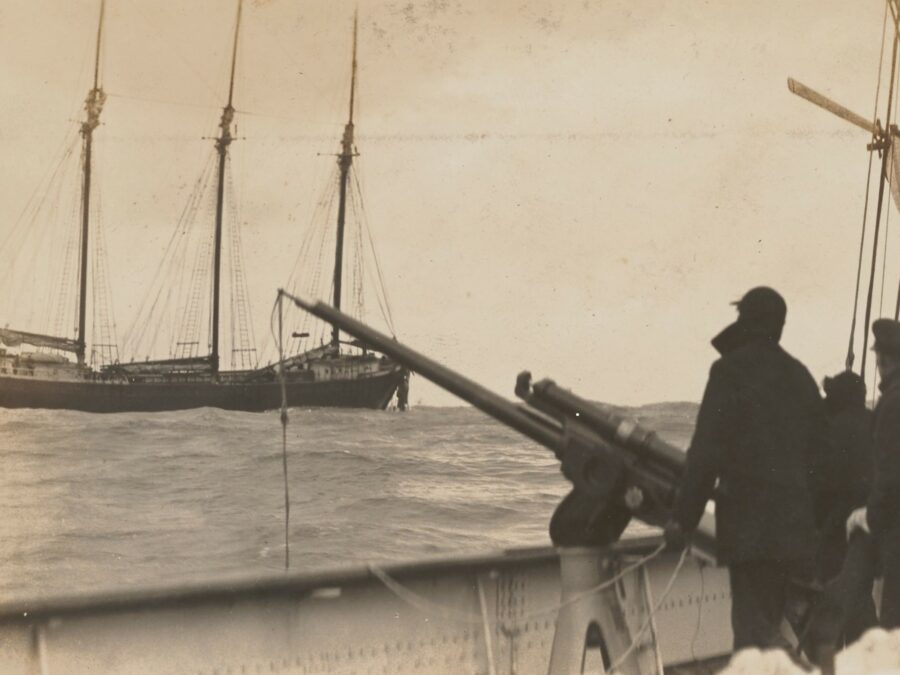
It was early on the cold, windy morning of Wednesday, Dec. 17, 1919. The Coast Guard cutter Manning commenced a slow, measured approach to the disabled schooner Sunbeam, adrift 150 miles off the Virginia Capes. Before the cutter was in position to shoot a messenger line across the schooner’s forecastle as the lead for a heavier towing hawser, Manning’s captain, Andrew Henderson noticed the wallowing schooner appeared to be settling in the water. To his astonishment, the schooner rolled over within minutes and disappeared beneath the surface. Flotsam, a single lifeboat with two persons aboard, and around half-a-dozen men thrashing in the frigid waters were the only evidence that the vessel had ever been there.
Two of the seven persons recovered that morning turned out to be Chinese “stowaways.” Subsequent debriefings of the survivors revealed that in addition to the schooner’s seven crewmembers, 18 Chinese persons had been aboard, strongly suggesting that this voyage had been a smuggling venture.
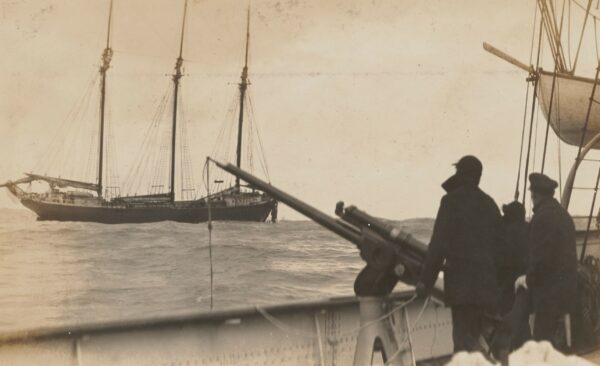
The smuggling of Chinese aliens into the U.S. had begun soon after the Chinese Exclusion Act of 1882 severely restricted the legal entry of Chinese persons into the U.S. Smuggling ventures were initially concentrated on the West Coast, with a maritime route from the city of Victoria, in Vancouver, Canada, to Washington State. However, pressure from the Revenue Cutter Service—forerunner of the Coast Guard—and the Customs Service, soon encouraged illegal migration east along the land border with Canada and south to Mexico.
Smuggling Chinese migrants continued for decades then virtually disappeared during World War I. However, the U.S. Commissioner General of Immigration reported ominous indications of a resumption after the war. In early 1919, 3,000 Chinese legally transited the U.S. to Cuba. Although they were ostensibly doing so to take advantage of one-year employment contracts there, the Commissioner General believed that they were only the vanguard of a growing number that would take advantage of this loophole to find a back door into the U.S.
History would prove the Commissioner General right. By 1921, more than 30,000 young Chinese men resided in Cuba. Almost all of them were believed to be awaiting a clandestine passage to the U.S. for a fee ranging from $500 to $1,000 each.
A small percentage of those trying to enter the U.S. by sea were true stowaways or deserting seaman, but the vast majority were smuggled. Some were moved individually, or in small groups, usually aboard large commercial vessels with the complicity of crewmembers. Others were smuggled in groups of 15 to 20 from Havana, often aboard sailing vessels like Sunbeam, which would emerge as the center of alien smuggling to the U.S.
Indeed, the Sunbeam departed Havana, Cuba, in late November 1919. The three-masted, 137-ton schooner had been bound for New York with a declared cargo of molasses. Its master, a “Captain Rivera,” reported as “Riveron” by the newspapers, would later claim that he discovered the 18 undeclared Chinese persons concealed on board only after already underway. This was a common defense, and often successful given the burden of proof necessary to establish intent. On day 18 of its voyage, a passing steamer reported via radio that the schooner was disabled. Sunbeam’s sails had been shredded by a gale, but it was not in immediate danger.
Moored at its homeport of Norfolk, Virginia, Coast Guard cutter Manning soon got underway to assist. The Manning had been built in 1898 for the Coast Guard’s predecessor service, the Revenue Cutter Service. Although a relic of the age of coal-fired steam propulsion, the 205-foot, 1,155-ton, twin-screw “cruising cutter” had been designed for sea keeping qualities. The cutter and its crews had been twice detailed to the Navy—during the Spanish American War and, more recently, during World War I.
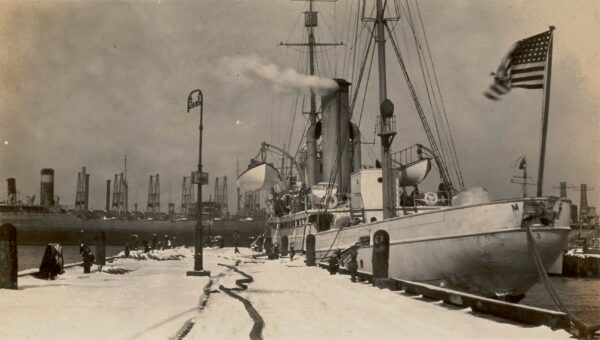
Having returned to the Coast Guard only four months earlier, the Manning was assigned the “Winter Cruising” mission for the area bounded to the north by Great Egg Harbor, New Jersey, and to the south by Cape Hatteras, North Carolina. From December through March, the cutter was required to continuously patrol offshore, “keeping at all times a vigilant lookout for vessels in need of assistance, except for brief stops for logistics or maintenance.” Under the command of Captain Henderson, who had served nearly 15 years at sea—five of them in command of cutters—the Manning was ideally suited for rescue at sea in the worst weather conditions.
The Manning received a radio call at mid-morning on the December 16 from the steamer Chicomico. The Chicomico passed an updated position and reported that it had taken the Sunbeam in tow but requested that the cutter relieve them. Less than four hours later, the Manning arrived on scene. In spite of heavy winds and high seas, the Sunbeam appeared seaworthy, so Captain Henderson decided to take the schooner in tow without first conducting a boarding. Establishment of the tow went well, but the heavy winds and rising seas limited towing speed to little more than steerage.
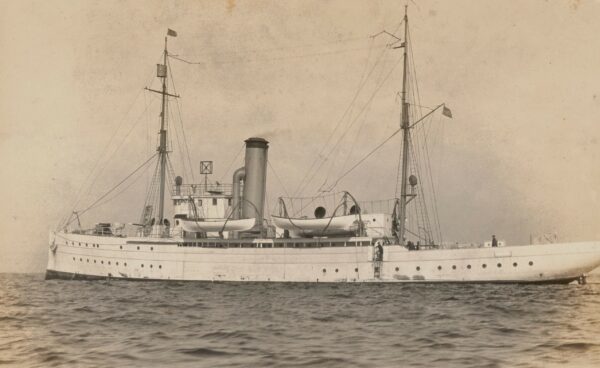
During the night, the towline parted, and the cutter stood by, monitoring the Sunbeam by searchlight, waiting for morning to reestablish the tow. At first light, the cutter sought to reestablish the tow, but the schooner sank suddenly and inexplicably.
With only minutes to pull the survivors from the water before hypothermia killed them, the Manning quickly hoisted the two men from the lifeboat and smoothly transitioned from towing operations to water recovery. Since the high seas and near gale-force winds ruled out launching his own boats, Captain Henderson backed and filled the cutter to an upwind position, then drifted down onto the debris field. His crew deployed two rafts and several life buoys, which four men were able to crawl onto or cling to, before hauling them aboard the cutter.
By this time, two men remaining in the water had become unresponsive and unable to assist in their own rescue. Warrant Boatswain Albert Hays and Seaman Jens Krestensen were lowered from the forecastle to retrieve them. Several times during the descent, they had to use their hands and feet to fend themselves from smashing against the cutter’s hull as it rolled in heavy seas. When safely in the water, they quickly swam to the unconscious men, untangled them from the debris, attached lifelines to them, and shielded them as they were lifted aboard the cutter. Once on deck, other Coast Guardsmen commenced “resuscitation treatment,” now known as rescue breathing, and were able to revive one of the two men. For their acts of heroism, Hays and Krestenson were awarded citations by the Coast Guard.
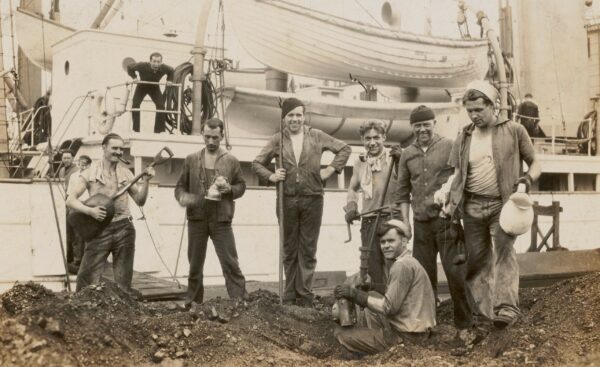
The rescue of the survivors of the Sunbeam demonstrated seamanship and heroism that has become a hallmark of the Coast Guard. The event also revealed the start of renewed alien smuggling to the U.S. Throughout Prohibition, traffickers would continue to move Chinese migrants by sea from both Mexico and Cuba to the East Coast until World War II, when Chinese immigration policies were relaxed.
National Coast Guard Museum insider tip: Visitors to the museum will have the opportunity to learn about the long and storied history of the Coast Guard’s role in combating dangerous and illegal human smuggling operations on both Deck02 and Deck03 of the museum.
